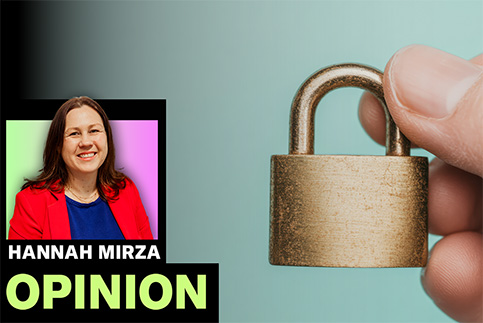Brand safety in a Donald Trump-led world

Opinion
The way that advertisers approach brand safety needs to change in a new political era and it will require hard work from marketers.
Whatever your politics and regardless of your feelings about the US election result, as marketers our job is to deal with the reality of a changing world.
We’ve had to do that with digital transformation and sustainability, for example — both of which remain works in progress.
The US election campaign showed that brand safety had become part of the culture wars, but the fact that Donald Trump won despite the allegations of bias effectively debunks that argument. Nevertheless, once an issue becomes politicised, a new approach is needed.
It’s fair to say that there were issues before the election. While the big platforms tried their best to ensure brand safety across the board, the sheer amount of content being produced has made the task nigh on impossible. AI has helped in some part, but there are still big gaps. Industry-led approaches have been stifled by the culture wars, while the third-party tools currently on offer are limited and too broad-brush in their impact.
Many who support Trump hold a view that any attempt at managing brand safety is akin to silencing free speech. Certainly, marketers will need to pay attention to what consumers, publishers and regulators say under the new administration, but each of us still needs to be able to define what makes content suitable for brand messages.
Some are already hiding brand-safety measures behind comments on poor performance and we have seen projects put on hold until the election result was clear.
Advertising adjacent to quality news content is brand-safe regardless of topic
How brand safety became an issue
Regardless of politics, nothing should stop brands from protecting their reputations and ensuring that the context in which their ads appear does not damage the brand in the eyes of their target consumer.
It’s worth considering why brand safety became such an issue: because brands were appearing on the front pages of newspapers accused of supporting terrorism.
The advertiser response was, in the main, to lock down and proscribe huge categories of content as part of their programmatic toolkit. This has had huge consequences for legitimate news publishers.
Only recently, for example, we’ve seen ads failing to appear around Euro 2024 because the traditional language of sports reporting sounds a bit like, well, something more aggressive. Media owners that covered the Paris Olympic Games suffered commercially because there was a terrorist attack in the city some years ago and automated systems blocked that content.
Stagwell’s Future of News report argues that media owners have lost billions. Data from the study appears to show that, based on a variety of metrics (including purchase intent, trust and values), ads appearing next to “non-brand-safe” content perform as well as ads appearing next to “brand-safe” content.
It’s also worth pointing out that there are studies that show brand trust can be hit by poor context — so the new approach needs to ensure the context is suitable for brands while also being more news-friendly.
Half of Reach’s Euro 2024 coverage wrongly identified by brands as unsafe
Getting it right
The bottom line is that brand safety isn’t easy, but there is a way to get this right. The only downside is that it takes hard work, because the fluidity of the English language means that you can’t simply leave it to automated tools.
There are three things that brands need to do:
- Apply rigour to check what you are blocking and what you are not. You can’t leave it to your agency because their list might not align with your values. This is dull but important work.
- You can’t simply leave it to the platforms and opt to buy lots of inventory in the hope that they are paying attention. Some platforms have improved their tools, but they are still limited in terms of adjacency.
- On the wider web, you need to recognise that there still isn’t a tool that’s fit for purpose, so you need to augment the work of what you are using with a human hand.
Getting this right matters. Brands can only support legitimate publishers’ role in producing quality content that enriches and informs if they adopt a more sophisticated approach to brand safety.
The bottom line is that they will have put in some hard work.
6 in 10 Brits say brands should stop funding social platforms spreading misinformation
 Hannah Mirza is founder and CEO of Responsible Marketing Agency
Hannah Mirza is founder and CEO of Responsible Marketing Agency




